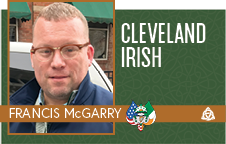
By Francis McGarry
June 28, 2023
It’s 1800, and do you know where your children are?
Not the tequila, but the year. Casamigos is the go to at The Lounge; particular tastes might as well be refined. There was no 200th Street in 1800. Clevelanders, if you would even call them that then, were still trying to establish a city, an economy and a society.
That year, Sarah Doan (daughter of the creek guy) was the first teacher at the first “school” in the Western Reserve, in Newburgh, at 9213 Miles Avenue. She received $10 a month in produce as compensation. Her summers were off, so people complained, but parents did not complain about the books she used. They did not have them.
Hoosier?
April 28, 1800, John Adams signed a bill to make the Western Reserve a part of the United States. Then Congress, not to be outdone, divided the Northwest Territory two days after Cinco de Mayo, creating the Territory of Indiana. Devoid of that action of Congress, Francis McGarry would never have been the first player in Indiana basketball history to make a three point shot. If you have doubts, ask Campbell.
That year, eight townships were made real: Cleveland (east of the river), Painesville, Middlefield, Richfield, Vernon, Hudson, Youngstown and Warren. Lorenzo Carter was one of the constables for Cleveland Township.
Dr. Moses Thompson was the first physician in the Western Reserve; he also had a farm and dairy. Cheese was one of the early industries in NEO. So was liquor. David and Gilman Bryant operated a still on the Cuyahoga and Superior. Two quarts a day were produced, mind your “p’s and q’s.”
The first schoolhouse was built in 1801 in Warren. The first applicant for the teaching position, William H. McGuffey (Scots-Irish), failed the teaching exam. Rev. William Wick also arrived and that was the beginning of the First Presbyterian Church. He allegedly introduced club soda to the Gilman brothers and they added it to their whiskey and ginger drink, allegedly.
Lorenzo Carter had a bash that year at his cabin on the 4th of July. The Cleveland elite, 12 women and 20 men, dancing to Samuel Jones’ fiddle. They partook in a maple sugar, hot water and whiskey libation. Gilman Bryant, 17, had rubbed a piece of candle on his hair to keep it keeping on and libationed enough to dance with Miss Doan, 14.
Formation of the State of Ohio
The Ohio Compact of 1802 made settlement more enticing to pioneers. They were no longer settlers. The Compact allocated monies for road building and school lands. By April 30, the US Congress authorized a convention in order to form a constitution for the State of Ohio, if voters wanted to join the Union. Arthur St. Clair, Northwest Territory governor, opposed statehood, but he had never been to the Union Club, Chuck’s, Mintz’s, Homestead, and Maple Lanes.
Zeke Hawley, a constable, conducted the first census in 1802. 67 free males, done. Apparently, that was the only category.
Lorenzo Carter was a boss. He bought almost 24 acres after being licensed to open a tavern, with Amos Spafford. The initial wood building burnt down, huff and puff, then he built a blockhouse: Carter Tavern (aka The Carter). Lorenzo traded with everyone: pioneer, settler or indigenious.
That entrepreneurial spirit led Ohio to becoming a state in 1803. John Shaw arrived that year with Thomas McIlrath. Shaw bought land in East Cleveland. The McIlrath Tavern was built and was sustainable until 1890. It contributed to Cleveland’s early reputation as being “rather loose in principles and conduct.”
Then the Shakers got here in 1805. It was the beginning of moral imperatives that would establish social practice as a defense against the other. Although the Irish would not arrive in substantial numbers for another 20 years, the die was cast.
Soon, the Kingsbury’s, being supported and surviving solely due to Native American support, was now exclusively Divine Providence. Pioneers replaced settlers and the early partnerships were forgotten.
Furs and Cleveland-made grindstones were traded east for salt, iron, leather and dry goods. John Metcalf, no relation to Eric, established the mail route to Erie.
War of 1812
That route served 57 people in 1810, the total population of Cleveland. Leonard Case arrived in Cleveland, as well as Alfred Kelley, the first lawyer. Then the War of 1812 disrupted the flow, but not before the first library association was formed, as was the first order of the Free Masons.
Urban myth? Verbal history maybe? St. Phil’s in East Cleveland had to be built according to what the Free Masons approved. Just what I was told from some old school Eastsiders. That being said, by 1812, over 20 religious organizations had been formed. On June 24th of that year, the first public hanging occurred, “the Indian O’Mic.” Say what you say.
William H. Jackson was enlisted in 1812 to defeat the British. He was freed in 1803 from enslavement and is buried in Woodland Cemetery. The war increased ship building on the Great Lakes and Cleveland benefitted economically.
We can discuss Noble H. Merwin building a warehouse in the Flats, or we can stipulate that these folks were here, before us. When us got here, they had established a society and a myth of origin.
Soon, the assistance of the first inhabitants was forgotten, and the settlers were mythicized. Then, the Irish arrived; we arrived.
We were different in many ways. After life in Ireland and then living on the canals, our people learned to celebrate each day and light a candle. Juxtaposed to those settlers who now determined their ability to survive was tied to the Masonic Order and not to the people who fed them when they had no food. As we would chant at Notre Dame, “Here come the Irish.”
Our people were seen as “the other,” a people fundamentally different from the settlers. Social controls were already in place to make sure the early Clevelanders behaved according to a particular interpretation of the King James Bible. When the Irish arrived, those controls were increased and focused on the behaviors our people displayed.
That is not to say our people were all angels, but we were definitely seen as foreign. The settlers had earned a degree of respect, if not for anything else, for their survival.
This was the beginning of Cleveland’s growth, a growth that necessitated the contributions of all present. Next month we will discuss how those early interactions worked for and against the early Irish immigrants.

- This Just In: MICHIGAN IRISH AMERICAN HALL OF FAME NAMES 2024 MEMBERS
- This Just In: Pittsburgh Day of Irish Entertainment is Coming
- This Just In: A week is still a long time in politics
- This Just In: Recognition of Palestinian Statehood an important step for the Palestinian people – Mary Lou McDonald TD
- This Just In: Update on Bringing National Women’s Soccer League to Cleveland

*Francis McGarry holds undergraduate degrees from Indiana University in Anthropology, Education and History and a Masters in Social Science from the University of Chicago. He is the Executive Director of Bluestone Hibernian Charities and proprietor of McGarry Consulting. He is a past president of the Irish American Club East Side and the founder and past president of the Bluestone Division of the Ancient Order of Hibernians.





